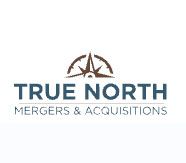What Is EBITDA (Earnings Before Income Tax, Depreciation, Amortization)?

True North Mergers & Acquisitions
October 15, 2024

EBITDA, short for “earnings before interest, taxes, depreciation, and amortization,” is a financial metric many business owners have heard about.
But truly understanding it becomes critical when charting a course for the future of your business. Whether you’re planning for growth, looking for investors, or preparing to exit, EBITDA offers a clear view of your financial health.
If EBITDA feels like a vague concept, keep reading. We’ll tell you what it means, how it’s calculated, and why it matters.
What Is EBITDA?
In simple terms, EBITDA is a way to measure how much money your company makes before:
- Interest: How much you pay on the company’s debts.
- Taxes: The amount you owe in income taxes.
- Depreciation: The decrease in value over time of assets like real estate or machinery.
- Amortization: Similar to depreciation, amortization accounts for decreased value of intangible assets like patents, copyrights, or trademarks.
But why exclude these factors when calculating your financial performance? We’ll explain that in the following section.
Why Is EBITDA Important for Business Owners?
EBITDA is a useful metric because it:
Allows for More Accurate Performance Comparisons
Debts and interest rates vary between competing companies. Using the EBITDA metric to assess performance allows for fairer comparisons between companies. This is particularly useful during acquisitions where buyers have plans to change the target company’s debt structure anyway.
Considers Tax Differences
Different tax rates apply to different companies, whether due to their legal structure or location. EBITDA removes tax variations from the equation, allowing you to more directly compare your performance, regardless of your tax situation.
Removes Non-Cash Expenses From the Equation
Depreciation and amortization don’t involve actual cash. But they are very real expenses that can impact your company’s reported profit. EBITDA excludes non-cash expenses, giving potential buyers and investors a clearer picture of your profitability.
Accounts for Cash-Flow Variations
Cash flow can slightly fluctuate, often due to the timing of payment and receiving that payment. EBITDA accounts for these short-term fluctuations, focusing instead on earnings generated by your core business operations.
How Do I Improve My Business’s EBITDA?
If you want to increase your EBITDA—or, in other words, grow your business's earnings before accounting for interest, taxes, depreciation, and amortization—you must improve your operational profitability. How?
- Cut costs by negotiating better deals with suppliers, streamlining production, and finding creative ways to reduce waste.
- Increase revenue by possibly expanding into new markets, launching new products or services, or adjusting prices.
- Improve gross margins by phasing out less profitable products and services or reducing the cost of goods without compromising on quality.
- Streamline operations by improving employee productivity and optimizing processes.
Are There Other Ways to Determine Business Value?
Besides EBITDA, there are many ways third-party acquirers determine business value, including:
- Market capitalization: The total value of a business’s outstanding shares, which is calculated by multiplying the share price by the number of shares.
- Times revenue method: Assigning a multiple to the company’s revenue based on economic conditions.
- Earnings multiplier: Adjusting future profits against cash flow that can be invested at the current interest rate over the same period.
- Discounted cash flow method: Similar to the earnings multiplier method. The primary difference is it considers the role of inflation in calculating present value.
- Book value: Calculated by subtracting the business’s total liabilities from total assets.
How Do Different Buyers Approach Valuation?
When it comes to mergers and acquisitions, there are generally two types of buyers:
- Strategic: Companies that share the same (or similar) industries and want to grow. For example, a large tech company might buy a smaller one—either to eliminate competition, broaden products or services, acquire talent, or all of the above.
- Financial: Often private equity firms are looking for a financial return. Unlike strategic buyers, financial buyers mainly acquire to improve a business and sell at a profit down the road.
With that in mind, it becomes clearer why strategic buyers might be willing to spend more on a merger or acquisition: Strategic buyers see specific benefits for their own business that could justify a higher price point.
So, while both strategic and financial buyers will consider EBITDA numbers, they may weigh it differently in the decision-making process.
Evaluate and Amplify Your Company’s Value
Are you looking for a partner to help you assess your business value? True North Mergers and Acquisitions can help. Take the first step towards achieving your goals by connecting with our President, Michael Hubsmith, to learn more.
Subscribe to our Newsletter
Sign up for the latest industry insights from True North Mergers & Acquisitions.




